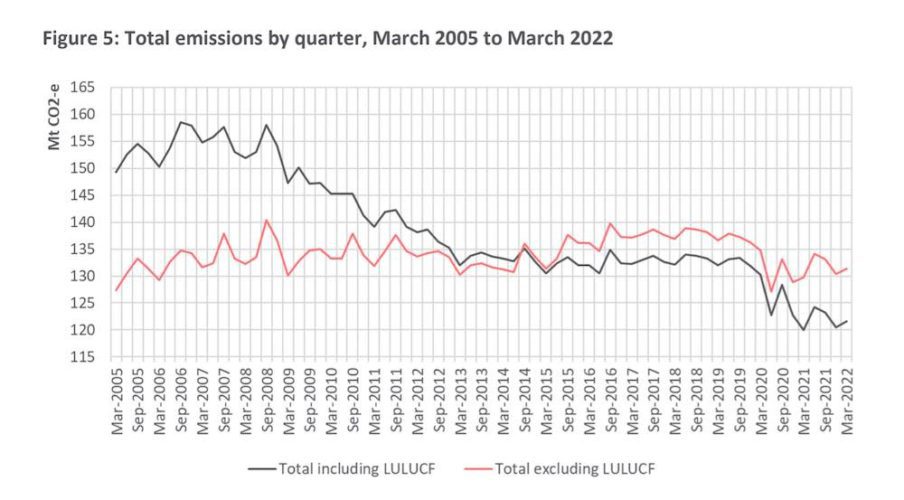Record Australian fossil fuel exports might help the Albanese government to put a better spin on the next federal budget, but for the nation’s carbon budget they represent bad news and even worse timing.
Just as federal parliament passes Labor’s landmark Climate Bill, locking in an increased (but not scientific) climate target of 43% reduction in emissions by 2030, a new report finds Australia’s emissions going up.
Ndevr Environmental’s latest report tracking Australia’s performance against the Paris target and its national carbon budget shows a 2% increase in emissions (excluding the contribution of Land Use, Land Use Change and Forestry, or LULUCF) year-on-year to March 2022, despite a 2.9% drop in electricity sector emissions over the same period.

This jump in emissions, the report says, has been driven by rising gas exports, as producers cash in on conflict-inflated global market prices, even as threats of local shortages drive up energy prices in Australia.
“Annual fugitive emissions are projected to increase by 5.0% over the year-to-March 2022 compared to the year-to-March 2021,” the report says.
“The upwards trend is influenced by LNG export which increased by 4.4% on the previous year. Quarterly LNG export data shows that Q3/FY2022 was 7.0% higher than Q1/FY2022.”
Needless to say, this is not the direction that either gas exports or carbon emissions should be headed under a government that, as the report puts it, “will have to dig deep to to make up for Australia’s portion of the carbon budget already spent.”
How much of that budget is already spent? According to the report, almost half.
“Australia’s cumulative emissions to Q3/FY2022 are 48.5% of the 2013-2050 CO2 budget,
recommended in 2014 by the Climate Change Authority (CCA) required to stay within a 2°C
warming scenario,” it says.
In simple terms, the report adds, “this means that Australia has spent the CO2 budget for a 17-year period in 9.25 years.” The purse strings, so to speak, must be significantly tightened.
“The 43% Paris reduction target is a challenge for the new government and will require strong emission reduction policies,” the report says.
To put it more clearly, Labor’s target is a 53% absolute increase on the country’s previous commitment (28%), which the report says equates to an approximate reducton from 621 million tonnes of carbon dioxide equivalents (Mt CO2-e) annually in 2005 to 354 Mt CO2-e annually by 2030.
As the chart below shows, if Australia stays on its current emissions trajectory, then by 2030 it will have cumulatively emitted over 900Mt of carbon more than its Paris 43% emissions reduction target.

As it is, Australia’s projected emissions for the third quarter of 2022 see it sitting above the Paris target trajectory by 12.6 Mt CO2e.
Why is it so important to meet – or beat – these targets? Because as a new study on Arctic warming from the University of Bristol illustrated this week, we are already “perilously close to key climate thresholds that if passed will have global consequences.”








